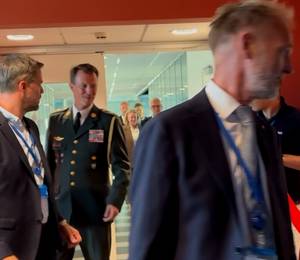Standard Comms presented its Smart Sound Perimeter system that has the ability, using audio and infrasonic sensors, to not just detect perimeter breaches but details of the breach, according to Zach Thompson, a company representative. The company’s sensor technology is already used to help NASA detect caves on Mars among other applications on Earth, even in the harsh environment of Antarctica, Thompson explained.
Currently, according to defensenews.com, the concept is being examined among Defense Department customers. The system consists of a handheld device that paints a picture of activity happening within a designated area. A unit can set up the system while it runs perimeter checks.
A typical base camp setup consists of three different parts. Infrasonic sensors are set in the center of the camp. Audio sensors are planted in the ground in a circular pattern to set up a perimeter. The infrasonic sensors have a range of about 3 to 4 kilometers, Thompson said. Perimeters can be expanded by adding more sensors. A hand-held device that maps sensor placement and breach detection would be included with the system.
The sensors also are low-power and easy to set up and connect using long-range wireless technology. The sensors, since they are tiny, would go largely undetected, but should one be taken out of play through damage, mechanical malfunction or an enemy, the remaining sensors would continue to work, he added.
The company’s current vision for the product is to provide an operator with a map containing information about breaches, but the system is also capable of feeding into augmented reality goggles, so a sentry on the perimeter can “see” things coming before the sentry can really physically see them, according to Thompson.
Information coming from the sensors are also fed into a large artificial intelligence system that allows it to become smarter over time. The system can tell the difference between a person digging or crawling, how many people or animals might be walking around, the point of origin for direct or indirect fire, and even specific vehicles. And as it gets to know an area, its differentiation improves, according to Thompson.
Long-term plans for the technology, Thompson said, include configuring and integrating it with other security systems, linking enduring sensor placements to a cloud and air-dropping sensors to areas void of troops.











